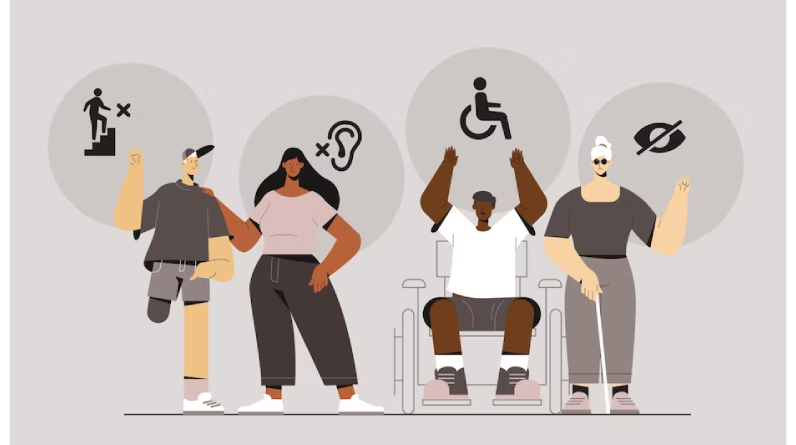How Can We Change The L&D Design Paradigm To Increase Employee Ownership

Briefly stated, the nature of work itself is in a constant state of evolution and adaptation to changing conditions. Diversity, Equity, Inclusion, and Belonging (DEIB) have been receiving more attention and funding recently, but this isn’t a passing trend.
Neurodiversity And DEIB
Organizational and human resources authorities around the world agree that increasing diversity in their initiatives and workplaces improves outcomes for all parties involved. More people in the learning and development (L&D) community have come to this conclusion, as they have seen the power of career advancement and skill enhancement in empowering previously excluded populations. While progress has been made, it is still not satisfactory. The most recent Statista poll found that 27% of American businesses still have a monolithic approach to employee training and development, while 3% have none at all.
Contrarily, diversity is one of the most important drivers of both employee satisfaction and business success. For instance, 94 percent of workers would stay longer with their organisations had they invested in their learning, and 91 percent want personalised training. That also means it’s not enough to have an L&D in place. Companies and L&D experts should instead take into account the wide range of differences among their staff members.
Employees who identify as neurodiverse fight for greater workplace representation, but they are often ignored. However, your L&D programmes can only be complete and effective if they address different diversity types.
Sometimes it’s easy to forget about the needs of employees who are neurodiverse.
Despite being coined in the 1990s, the concept of neurodiversity is still relatively new in the business world. Neurological differences are seen as variations in brain development rather than flaws. Hence, those who identify as neurodiverse don’t experience it as a medical issue, but only as individuals who navigate the world through different lenses, each of which has its unique strengths, weaknesses, and potential. In spite of this, they are still a part of the neurodiverse community, and they require the support of those who will advocate for neurodiversity and ensure that it is recognised.
Training and workshops tailored to the unique needs of neurodiverse students are the primary focus of learning and development programmes designed specifically for this population. By putting these plans into action, L&D experts help create a more level playing field in which all workers have the opportunity to acquire marketable skills. However, despite designers’ best intentions, their work is often unsuccessful. There are a number of factors at play here, including a lack of user friendliness in the interface, boring material, and useless software.
However, there is another widespread issue that can hinder neurodiverse students’ ability to learn. Many employers lack an adequate understanding of neurodiversity and, as a result, are often unprepared to support their neurodiverse employees. Therefore, they either implement ineffective training or push the needs of neurodiverse workers to the back burner. In the wake of such weak efforts, employees find themselves shut out of learning and development opportunities, stymied in their efforts to reach their full potential at work and deprived of the fulfilment that comes from doing meaningful work.
Unfortunately, this is often the case because L&D professionals aren’t paying close enough attention to their employees. Instead, they talk a good game about providing excellent training, but they ignore the details in favour of the big picture. Employees who experience neurodiversity are entitled to the same respect and opportunities for professional development as members of other marginalised groups. The workforce will not be able to have its needs met if these efforts remain siloed.
Furthermore, if not all employees have equal access to learning and training that targets their unique capabilities, L&D professionals risk overall dissatisfaction among employees. That doesn’t mean separate programmes have to be made for each type of employee; rather, it means that whoever develops the programme has to make sure that it’s accessible to people with a wide range of learning preferences and abilities.
To Elect, Rather Than To Engage
It’s not uncommon for learning and development (L&D) experiences and programmes to fall flat or fail to achieve their goals for the organization’s employees. As a result, it is crucial for Learning designers to create programmes with neurodiversity in mind, and to provide opportunities and instruction that excite and motivate participants of all backgrounds. There is no better method for encouraging outstanding performance from members of the neurodiverse workforce. Of course, anyone working in L&D knows that despite appearances, this is anything but simple.
How then do designers of learning experiences shift their focus from merely fostering engagement to also creating a sense of ownership? The best piece of advice is to consult with professionals. A company needs L&D leaders and programme designers to implement effective learning initiatives and ensure neurodiverse workers have equal access to benefits and advancement opportunities. They have come a long way in their efforts to identify and connect with their target market in order to create products, services, and solutions that meet their needs.
Also Read :Top Rated Milan Fashion Week 2023 Moments
In addition, the designers made a concerted effort to incorporate neurodiversity concerns into the course of action. But what makes them stand out from other course creators? As a first step, learning designers should conduct interviews with members of the neurodiverse community to gain the insight they need. After conducting product and service testing with neurodiverse participants, they evaluate the results and make design decisions based on those results. Only after positive feedback is received will the programme be released. But Learning designers don’t stop after making a single set of exams. Instead, they keep in touch with neurodiverse communities on a regular basis to make incremental improvements to product placement and strengthen bonds between brands and their users.
Even after the program’s release, the creators actively seek further feedback and suggestions. This is why they frequently use customer satisfaction surveys to advance neurodiverse user experiences and boost equity and inclusion. To guarantee that your neurodiverse staff members are never left out of your training programmes, you must establish a long-lasting shift in your design paradigm. Here’s a plan to make it happen.
How To Transform The Design Paradigm
Turn Engagement Into Advocacy

Although it’s still among the crucial factors to engage neurodivergent learners, L&D leaders and developers should go beyond that pillar. Instead, they need to stress that it’s not enough for DEIB reps to simply be present at meetings. Most people with neurological differences today are merely observers in the product development process, rather than active participants. The first step toward true inclusion and equality is elevating neurodiversity to the forefront of the conversation and giving L&D leaders and designers a voice in the process.
This means that companies need to foster advocacy as a form of employee empowerment. Learning about the real, actual, and specific experiences of a target demographic is essential for designing effective products and services for that demographic. Many businesses develop L&D programmes for students with neurological differences without soliciting or considering their opinions. Therefore, when developing neurodiverse training, you should consider how many employees you have interviewed and compiled their feedback from. Even if you’re a brilliant designer and a visionary, you won’t be able to create an effective learning solution for people with neurological differences if you haven’t experienced those differences yourself. That’s why stakeholder participation is so crucial during the design process.
Realize your limitations and the importance of receiving objective feedback and outside viewpoints. Even if you have the best of intentions, you won’t be able to make a truly engaging programme without first engaging with the people you hope to reach. But that, like so many other things, is easier said than done. Neurodivergent employees are often silent about their status and dislike speaking about it. They fear being ridiculed or accused of taking advantage of the company. Working with learning consultants who have experience creating programmes for neurodiverse audiences is a great way to ensure that your employees’ personal information and feelings are protected. They bring genuine knowledge, insight, and compassion, ensuring that the needs of neurodiverse students are met without compromising their confidentiality.
Focus On An All-Inclusive Approach To Design
It is recommended that if you choose to create the solution for neurodiverse learning on your own, you first conduct extensive research. Thankfully, literature on neurodiverse perspectives and experiences is increasingly available today, allowing you to lay out the foundations of an inclusive design. Step two is to evaluate it using your fundamental design processes and philosophies. Find out if the foundation you’ve laid can yield an interesting solution that will appeal to your neurodiverse audience. Remember that they learn in different ways, not in inadequate ways. Because of this, you may need to make some adjustments to your learning design process. You should exercise caution because that may indicate a need for a radical strategy shift. This isn’t an overly difficult task, though.
Think about making things more accessible and breaking down massive L&D projects into more manageable chunks. Also, make sure your neurodiverse students have access to a straightforward and easily understood curriculum that will enable them to effectively utilise the platform. The navigation and layout of your site should be simple to understand, and everything should work together smoothly. Keep in mind that neurodiverse students should be treated as adults and not restricted in their learning. You should prioritise a user-friendly layout, tone down the glitzy extras, and provide downloadable transcripts in addition to captions. However, neurodiverse students are not a static group; you may need to implement individualised adjustments and strategies to accommodate their unique learning styles and circumstances.
Leave a reply
You must be logged in to post a comment.








